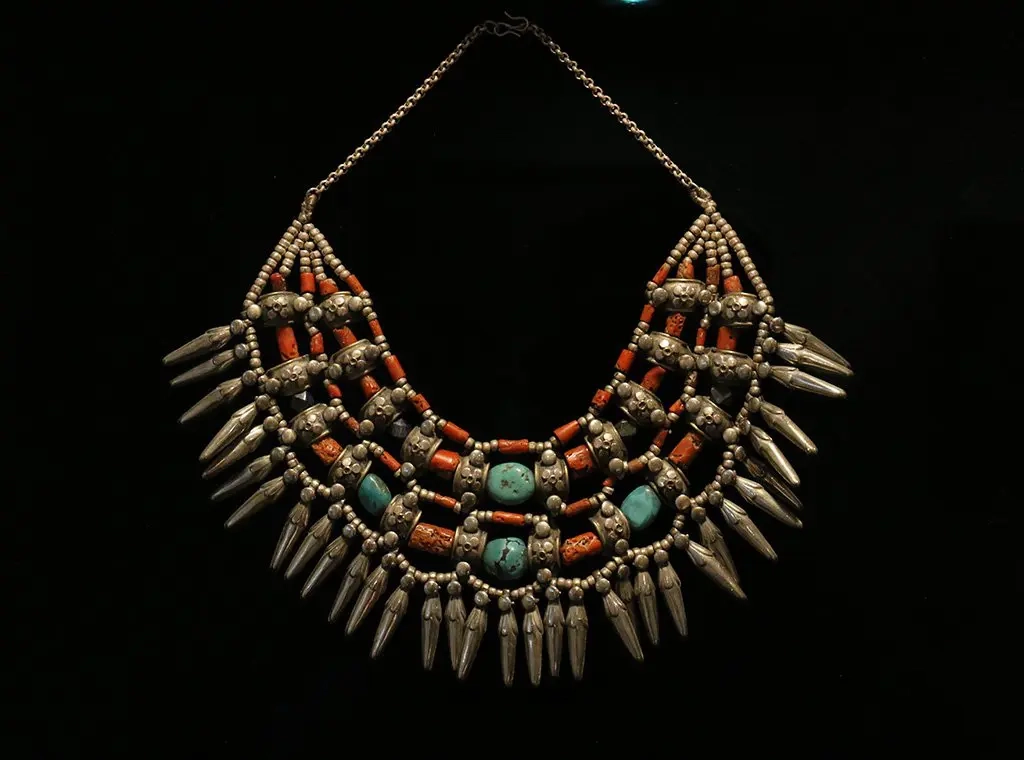The history of jewelry begins with man stepping on the earth, which means prehistoric times. The shape and concept of jewelry at that time is very different from what it is now, in the way that the materials used as jewelry were not valuable and animal and fish bones, bird feathers and small colored stones were used to make them; Materials that were beautiful and durable. In terms of concept, these ornaments were signs for people’s identity, expertise and status. Since ancient people did not know how to cut stones, stones like diamonds that are now precious were not popular at the time. Diamonds and similar stones became popular in the 1300s, when Europeans learned how to cut them.
At that time, people mostly lived by the sea and big rivers, so they used shells, bones, and fish teeth to decorate their bodies. The first discovery of jewelry is a simple fish bone necklace that was found about 25,000 years ago in a cave in Monaco. Another group of people who lived inside the lands hunted animals for food and used different parts of animal bodies such as claws, horns, mammoth tusks, animal bones, bird feathers, and deer horns as decorative materials. All these materials were used together as ornaments when they lost their natural state and turned into other complex shapes. It has been customary that hunters used these ornaments more than others, because they believed that wearing hunting spoils was good for them and also showed their bravery and hunting skills.
Over time, various types of jewelry were made, until there was an ornament for every part of the human body: armbands, bracelets and rings for the hands, anklets and rings for the feet, necklaces and collars for the neck and nose rings, shoulder rings, lip rings. , earrings and crown for face and hair. With the change of people’s lifestyle from nomadic to socially settled style and the foundation of the first ancient civilizations, the conditions changed. People settled along the rivers, which led to the development of agriculture and later the discovery of mines in which they found precious metals such as gold and other precious stones.
Jewelry in BC
During the years 3000 to 400 BC, the Mediterranean countries and the people of the land that is now Iran were pioneers in the field of jewelry. Jewelry pieces at that time included stone and wax beads that symbolized spiritual matters and the stars. Jewels were offered to the gods as precious possessions and were used to decorate statues. The Egyptians were also among the most important jewelers from that time, so that many ancient jewels, which were used to decorate mummies and were buried with them, have been discovered in buried temples. The Greeks also had very rich and varied jewelry 1200 years before Christ. At first, they imitated oriental designs in jewelry making, but over time, they created their own style inspired by their gods.
Jewelry in the Middle Ages and Renaissance: 1500-1200
Different models of jewelry in that period showed the status of society and different social classes. Precious metals such as gold and silver belonged to the nobles, and people who were in the lower ranks of society could use less valuable metals such as copper and maswar. At that time, colored jewelry made of enamel and precious stones were very valuable, and people believed that some of these jewelry had magical powers and protected their owner. The value of gemstones was determined by their color and luster, not their cut, and Greek and Roman engraved gemstones were highly valued.
With the end of the dark years and the arrival of the renaissance, the jewelry industry was also affected, and the biggest changes that showed were the use of color on both jewelry pieces and advancements in stone cutting techniques, which made the gems shine more and more. During this period, stone carving, which is considered one of the ancient arts, was revived and the use of portraits in jewelry became common.
Jewelry in the 17th century
In these years, jewelry fashion took a new shape and, unlike previous decades, the use of enamels with soft and pastel colors became common in metal coloring, and stone cutting techniques became more advanced. Large ornaments and brooches were very popular with the people and usually had to be sewn or pinned to clothes. From the middle of the 17th century, new methods were used to increase speed in fencing, so light and small swords were made with short flexible blades. With the arrival of these new swords, their decoration became a popular male ornament worn by well-dressed men.
Jewelry in the 18th and 19th centuries
It was a clever technique that during this century, diamonds were more often set in silver to reflect the white color of the stone more than ever before. Jewelry had become an essential part of royal life and the use of large jewels was common. Because jewelers in this century knew the high value of gemstones, they either sold them at the time or reused them in new jewelry work, not many diamond jewelry from this era survives.
During the first decades of the next century, jewelry focused on the classic designs of the past. Ancient Roman and Greek jewelry designs were also very popular during this period. Flower and fruit designs also became very popular because they were symbols of friendship and love. At first, these designs were delicate and simple, but over time, they became designs with more complex combinations of flowers. Floral design jewelry was very creative in the way that jewelers chose the color of the precious stones used in the jewelry in harmony with the colors that exist in nature.
Jewelry in contemporary times: 20th and 21st centuries
The contemporary era is full of new and challenging designs, and the limits of jewelry are becoming less and less day by day. Materials such as pottery, paper and plastic that have little value have entered the jewelry market and changed the boundaries set for traditional jewelry.
One of the most important changes of this period compared to previous periods is the use of more devices and technology to make jewelry. In the past, most jewelry pieces were made by hand, while today, jewelry making equipment has made significant progress and in modern methods, most of the jewelry making steps are done using devices and digital design, and only a small part requires manual work; As a result, the speed and quality of work has increased significantly. On the other hand, in the past, in making jewelry, only their beauty was considered, but today, the use of jewelry has gone beyond beauty, and jewelry that carries a special message and concept, and personalized jewelry have become very popular. Inventing various cuts for stone is also one of the most fundamental developments that happened in the field of jewelry in the contemporary era.




